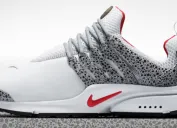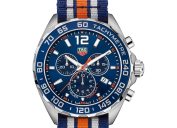Here's Why Italian Craftsmanship Truly Stands Apart
Think of it like another art Italy is renowned for: Cooking.

The fabled handmade footwear of Paul Evans, the kingly cashmere of Brunello Cucinelli, the sleek, spy-movie suits of Giorgio Armani and Ermenegildo Zegna, the fun and flirty fashions of Dolce & Gabbana.
Yes, it's all made right in Italy. Now, if you think the phrase "Made in Italy" is something just casually thrown around, we'd like to offer you a bit of perspective.
To be considered "Made in America" in the United States, a product needs to be "virtually all" produced here (which is why an "American" car can have dozens of parts hailing from overseas, or even be produced and assembled overseas). But the corresponding term in Italy much more tightly protected. It's so protected, in fact, that a 2009 parliamentary ruling in Italy prohibited the use of the phrase on any product label, in any language ("tutto italiano"), or in any likewise iteration ("100% Italia"), unless the product is genuinely Italian-made—throughout every step of production.
That's why, according to menswear expert Salvatore Giardina, a renowned professor at New York's Fashion Institute of Technology, Italian craftsmanship is—without question—the undisputed "best in the world."

The Heston Double Monk Strap Boot from Paul Evans. $399; buy now at paulevansny.com.
Consider the Heston Double Monk Strap Boot from Paul Evans (pictured above). Like all shoes made by Paul Evans, the ultra-high-quality calfskin leather is Blake stitched in Naples by some of the most experienced master shoemakers in the world. Blake stitching, for the record, is expert-level construction that makes the shoes not only more durable and long-lasting but also more flexible and vastly more comfortable. Throw in the fact that the artisans hand-painted the finish, and you're looking a one truly remarkable, unique, and altogether luxurious dress shoe.
Italian craftsmen also have access to some of the best materials and natural resources on the planet. In addition to Paul Evans' unique calfskin leather available to the artisans of Naples, Giardina points to Biella, a small province about 50 miles west of Milan, which is a haven for wool production. In fact, some mills in the region, like Vitale Barberis Canonico—the main fabric supplier for the suit savants at Zegna—have been in operation since the 17th century.
Since Biella is due south of the Swiss Alps, all of the water for processing comes straight from unsullied glaciers. As such, it's essentially devoid of salt and minerals. Many mills around the world use mineral-laden water, which leaves wool coated in a film—which you won't find on even a single thread from Biella.
"The wool, with water from that specific area, is almost like a miracle of nature," says Giardina.
It's like cooking, says Best Life style director John Mather. If your ingredients are good enough, no matter your skill behind the skillet, you really can't fail. But if you happen to be a world-class expert, well, a resulting masterpiece is all but guaranteed.

The Martin Wholecut from Paul Evans. $399; buy now at paulevansny.com.
For further proof, take a look at Paul Evans' Martin wholecut (pictured above). Unlike your standard Oxford, a wholecut is constructed from a single piece of leather—a whole cut. The result is a look of refined austerity that instantly projects C-suite-level elegance. (Small wonder that it's the brand's most popular shoe.)
To be sure, while all wholecut shoes—a relative market rarity, since they're tougher to make than, say, a pair of derbies—stand out to some degree, the Martin is a cut above the rest, no thanks to the materials. They're constructed entirely from burnished, authentic Italian calfskin. And to top it off, every shoe is painted by hand. (In case you're wondering, yes, the Martin has rightfully earned the "Made in Italy" label.)

The Van Damme Belgian Loafer by Paul Evans. $399; buy now at paulevansny.com.
But make no mistake: The secret ingredient in Italian craftsmanship is nothing more than a truly superhuman amount of care. Many Italian-crafted shoes, such as Paul Evans' Van Damme loafers (pictured above), require a 100-plus-step process, all done by hand.
And as far as suiting goes, "Italian tailors can spend 40 to 50 hours working on a single suit," says Giardina. One suit! That's an entire American workweek. Think of what your 9-to-5 looks like. Whereas we might fire off hundreds of emails and prepare a dozen (or so) presentations, a tailor or shoemaker in Florence—or Milan, or Naples, or Rome—is spending every minute of that time caressing raw material into a bona fide work of art.
"It's all about the details," says Giardina.
To discover more amazing secrets about living your best life, click here to sign up for our FREE daily newsletter!





















